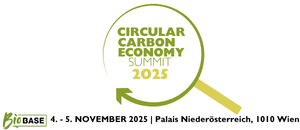
Green competition for plastic foam and mineral wool is growing: Wood fiber insulation, insulation made from sheep’s wool, and other insulation materials made from renewable raw materials currently account for a total market share of 6.5% in Europe. In some countries, this figure even exceeds 12%. Ceresana has analyzed the European market for eco-friendly insulation materials, which are used in the construction industry primarily for thermal insulation, but also as cold insulation, soundproofing, or humidity buffers. The new, second edition of the market study on biobased insulation materials predicts that sales of these renewable building materials in Europe will rise to more than EUR 2.33 billion by 2034.

Traditional Materials, Innovative Insulation Products
Whether as blow-in flakes, panels, mats, or pellets: Today, cellulose is by far the most widely used biobased insulation material and has a market share of almost 46% in this segment. Cellulose usually comes from the recycling of paper, but cellulose fibers can also be obtained from meadow grass, for example. The trend towards energy saving, environmentally friendly buildings and homes with a healthy indoor climate means that traditional insulation materials such as straw bales, reed, cork, flax, hemp, and other natural fibers are being given a new lease on life. The vision of a circular economy is spurring the search for biobased innovations. How about denim wool made from old jeans? Researchers are also working on aerogel made from lignin, a by-product of paper production, which is bonded with biodegradable plastics such as polylactic acid (PLA). Space-saving, wafer-thin panels or insulating plaster made of aerogel could prevent thermal insulation from turning the windows and doors of a house into a kind of embrasure in meter-thick castle walls.
Exciting Times for the Construction Industry
The construction industry is currently experiencing a challenging phase in many countries. In Italy and France, major subsidy programs for the energy-efficient refurbishment of buildings are coming to an end. On the other hand, billions in public spending on infrastructure and climate protection promise new contracts in Germany.
In the European Union, better thermal insulation is one of the priorities of the recovery and resilience plans for the “green transition” by 2026. Ceresana forecasts rising demand for biobased insulation materials marketed with eco-labels such as the German “Blue Angel” or the “Austrian Ecolabel”. Natural materials are often even more expensive and lesser-known than mineral or synthetic products. Ideally, however, biobased insulation materials are superior in terms of building physics, non-toxic, easy to combine with biobased paints, biobased wallpapers, biobased adhesives and other sustainable building materials – and last but not least, they are also biodegradable.
Ceresana expects the highest growth in residential construction at an average rate of 3.7% per year, and slightly less in non-residential construction. In Europe, the development of new construction is, overall, relatively weak, with the exception of warehouses, logistics facilities, data centers, and the defense sector. In the renovation sector, on the other hand, growth rates could reach up to 4% per year.
Current Market Report “Biobased Insulation Materials – Europe” (2nd Edition):
Chapter 1 of the new study provides a comprehensive analysis of the European market for biobased insulation materials – including forecasts up to 2033. The development of demand (in 1,000 cubic meters) and revenues (in euros and US dollars) is explained.
The demand for biobased insulation materials is also broken down into the construction segments:
- New construction
- Renovation
- Residential construction
- Commercial construction
Furthermore, the demand for the following product types is presented:
- Cellulose insulation
- Wood fiber insulation
- Other insulating materials
In Chapter 2, the market for insulation materials is analyzed individually for 14 countries. Belgium, Germany, France, the United Kingdom, Italy, the Netherlands, Norway, Austria, Switzerland, Spain, Poland, Czechia, Russia, and Türkiye. Demand and revenues for biobased insulation materials are shown in each case. In addition, the demand is broken down into the construction segments and product types.
Chapter 3 provides useful company profiles of the largest manufacturers of biobased insulation materials, clearly arranged according to contact details, revenues, net income, product range, production sites, and profile summary. In-depth profiles of the 41 most important producers are given, for example of Kingspan, Steico, Gebr. Knauf, DAW, GUTEX, Saint-Gobain, Soprema, and Isocell.
=> Ceresana regularly analyzes the European and global markets for insulation materials. A separate market study deals with expandable polystyrene (EPS). Current Ceresana market analyses on plastics and individual plastic products (pipes, films, windows and doors), on adhesives, and on paints and coatings are also relevant for the construction industry. Ceresana has a particular focus on biobased materials.
Scope of the Report:
| Attributes | Details |
| Base Year | 2024 |
| Trend Period | 2022 – 2034 |
| Forecast Period | 2025 – 2034 |
| Pages | 190 |
| Product Types | Wood, cellulose, and other insulation materials |
| Application Areas | New construction and renovation as well as residential construction and commercial construction |
| Company Profiles | Kingspan, Steico, Knauf, DAW, GUTEX, Saint-Gobain, Soprema, and Isocell (selection) |
| Edition | 2nd Edition |
| Publication | April 2025 |
FAQs
Why are bio-based insulation materials attractive?
Insulation made from natural materials can further improve the energy and environmental balance of buildings. “Green” materials are offered with eco-labels and often receive state subsidies.
Which bio-based insulation materials are sold the most?
In Europe, around three quarters of sales of insulation materials made from renewable raw materials currently come from wood fibers and cellulose.
How will sales of bio-insulation materials develop by 2034?
Ceresana analysts expect sales of eco-friendly building materials in Europe to grow to more than EUR 2.33 billion by 2034.
Which application areas for bio-based insulation materials are growing the most?
Ceresana forecasts an average growth of 3.7% per year for residential construction. For the renovation sector, Ceresana expects growth rates of up to 4% by 2034.
About Ceresana
As one of the world’s leading market research institutes, Ceresana specializes in the chemicals, plastics, packaging, and industrial goods sectors. Special focus areas are bio-economy and automotive / mobility. Companies have been benefiting from our high-quality industry analyses and forecasts since 2002. More than 250 market studies provide more than 10,000 customers around the world with the knowledge base for their sustainable success. https://ceresana.com/en
Source
Ceresana Research, press release, 2025-04-29.
Supplier
Ceresana Research
DAW
European Union
Gebr. Knauf KG
GUTEX
Isocell GmbH & Co. KG
Kingspan
SOPREMA Group
STEICO AG
Share
Renewable Carbon News – Daily Newsletter
Subscribe to our daily email newsletter – the world's leading newsletter on renewable materials and chemicals













